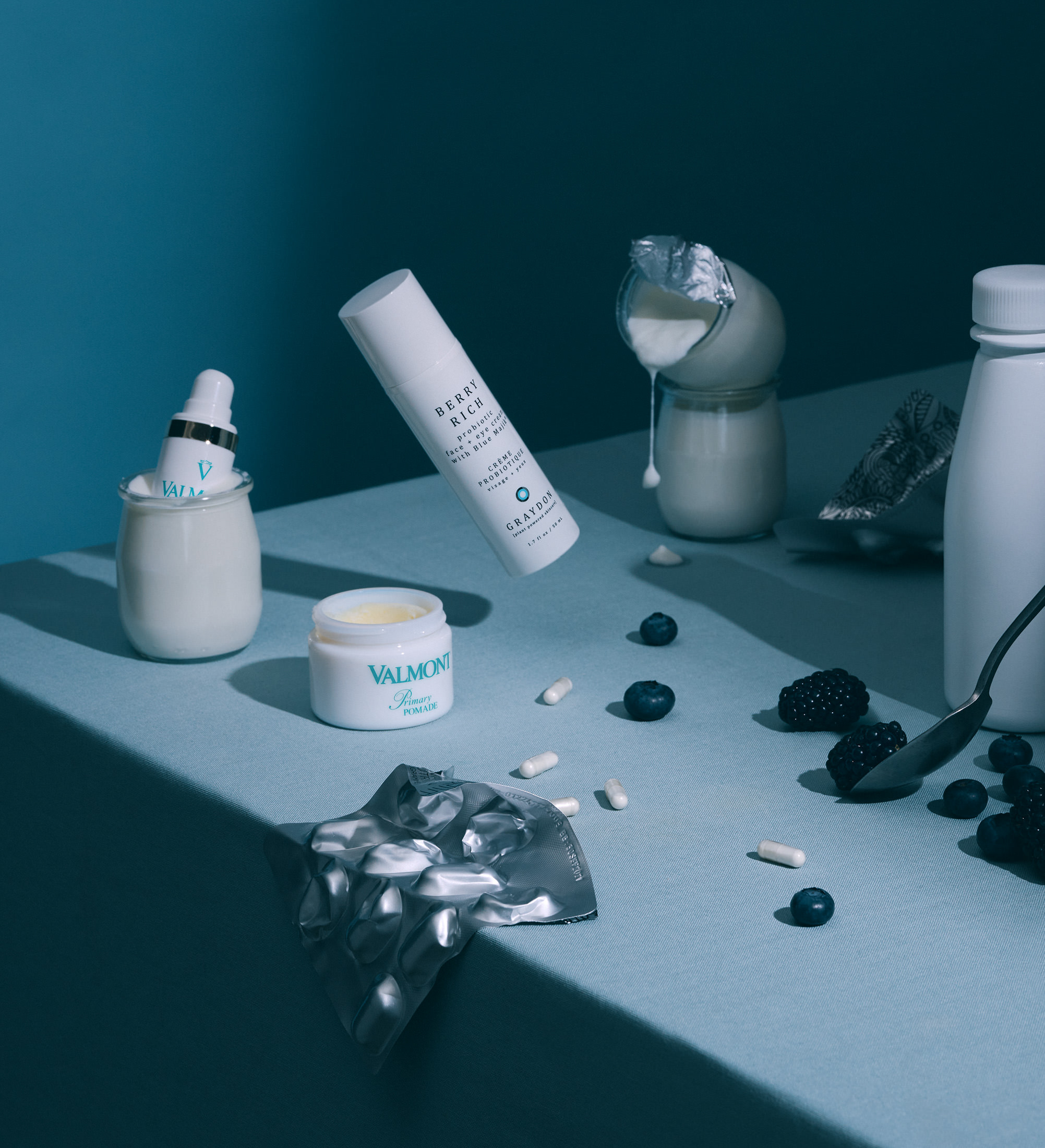2020 is the year of being squeaky clean. Scrub your hands, scrub every surface, sanitize everything in sight seems to be the order of the day. But one area we need to be careful not to overly sanitize is the face. While scrubbing gets rid of bad germs, it likewise strips out the good, which are an essential part of keeping our visages balanced and healthy. A dose of bacteria is key for that perfect dewy glow, and this is where pre- and probiotics come into your beauty regime.
Many of us are familiar with pre- and probiotics thanks to a new frontier in health that aims to understand gut flora and how probiotics can affect it. But our skin also has its own flora, and while it’s linked to the health of our gut, this surface microbiome is also directly related to the condition of our skin. Acne, rosacea, itching, dryness, inflammation, and even lines and wrinkles can all be indicators that the skin’s ecosystem is seriously out of balance.
“It’s not about how much bacteria you have on your skin, it’s about the diversity of the bacteria on your skin,” says Amanda Macino, director of training in North America for the Swiss luxury skin-care brand Valmont. “When there’s diversity, the skin is healthy.” Your skin’s microbiome is a broad collection of organisms that is an integral part of the skin’s ecosystem, and, like your gut, what you feed it will dictate how effectively its microflora can function.
In June, Valmont launched its unisex Primary collection that aims to prep, repair, and balance the skin with a range of five products featuring pre- and probiotics in a proprietary complex. Cell fragments of the lactic bacterium Lactobacillus pentosus help enrich and diversify the microbiome, while provitamin B5 is known for its healing properties. Fructooligosaccharides (not included in the Primary pomade due to its texture) are tiny prebiotic sugars that help nourish the beneficial bacteria already present in the skin, while treatments using probiotics promote diversity in the flora of the microbiome or skin ecosystem.
Meanwhile, Toronto-based former pastry chef Graydon Moffat came to the probiotic skin-care game while teaching yoga in Southern California and becoming interested in superfoods. She began making products for her clients using whole foods, which now underpin the entire Graydon Skincare stable. “I became a vegan chef, which was very healing for me, and that’s when I got really interested in the microbiome and probiotics because I had a lot of reprogramming to do in my gut,” she says. Her bestselling probiotic-infused vegan Berry Rich face and eye cream dovetails her love of food and health: its wholesome, vegan ingredients include wild blueberry seed oil and blue-green algae along with Lactobacillus ferment lysate, which aims to protect the skin barrier against sensitivity and damage by supporting healthy bacteria. Signals produced by these probiotics help stop your skin cells from sending an “attack” message to your immune system, keeping acne and rosacea tamped down.
And there’s increasing momentum for the idea that what’s good for the gut is good for the face. “Our skin is definitely connected to our gut, which is connected to our immune system,” says Joy Stewart, owner of Vancouver’s Touch of Joy spa. Indeed, dermatologists John H. Stokes and Donald M. Pillsbury first proposed the idea almost 80 years ago that the gut’s microflora are directly related to skin inflammation based on studies of patients with acne and systemic skin disorders. Among the remedies they advocated were Lactobacillus acidophilus cultures.
As soon as Health Canada approved it this year, Stewart started stocking U.K.-based Advanced Nutrition Programme’s skin range, including its SYB4 or Skin Youth Biome with four probiotic strains. This daily probiotic supplement includes Lactobacillus rhamnosus, Lactobacillus reuteri, Pediococcus acidilactici, and Bifidobacterium longum, all of which help support the skin’s natural barrier. Its live cultures purport to help reduce fine lines, nourish dry skin, and aid in collagen formation and immunity, not to mention support gut flora. One of Stewart’s clients sent her a before/after photo: in just four weeks, her redness, inflammation, congestion, texture, and even pore size were all radically improved. “Wow!” she said. “Just wow.”
This article is from our Autumn 2020 issue. Read more Beauty stories.









